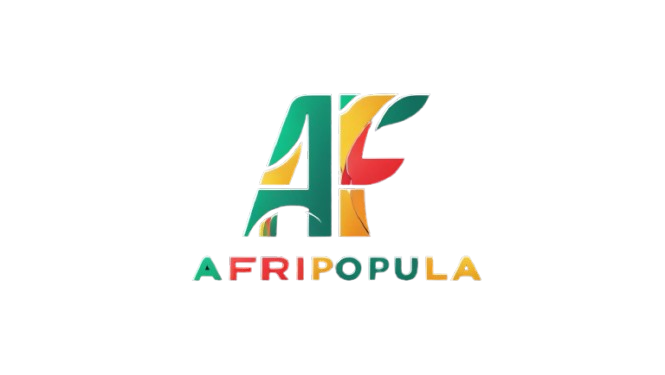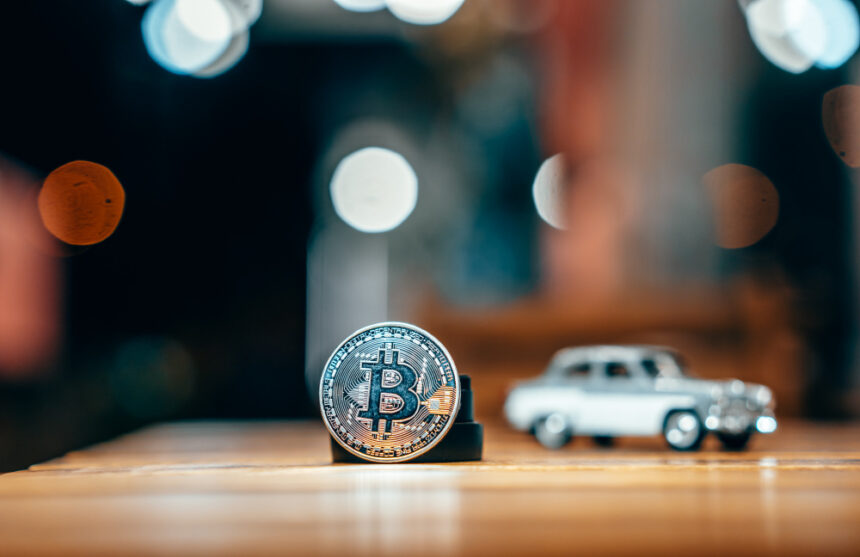In recent years, Bitcoin has dominated headlines and captivated global markets. However, the crypto revolution doesn’t end with this pioneering digital asset. A far-reaching transformation is unfolding across the financial ecosystem, driven by the rising influence of Decentralized Finance (DeFi). As blockchain technology matures and gains trust, DeFi is emerging as one of the most disruptive forces in modern economic history—a genuine revolution in financial innovation.
Unlike Bitcoin, which primarily serves as a digital store of value or “digital gold,” DeFi aims to recreate and enhance the entire financial system using open-source software and decentralized networks. This ambitious goal encompasses lending, borrowing, insurance, trading, and even complex derivative markets—all without intermediaries like banks or brokers. It’s a shift that could democratize access to financial tools and services, reshaping global finance for good.
The momentum behind this movement isn’t just technical—it’s deeply philosophical. DeFi is built on principles of transparency, permissionless access, and trustless interactions, enabled by smart contracts. As this landscape evolves beyond speculation and hype, it becomes essential to understand the underlying forces driving DeFi’s rapid ascent—and where it may take us in the next decade.
From Bitcoin to DeFi: Understanding the Evolution of Financial Innovation
The story of decentralized finance starts with the birth of Bitcoin in 2009. Introduced as a response to the global financial crisis, Bitcoin promised a peer-to-peer electronic cash system outside the control of centralized authorities. It was the first real-world application of blockchain—a ledger that was transparent, immutable, and secure. But Bitcoin, while groundbreaking, was limited in scope.
Soon after, Ethereum introduced smart contracts, paving the way for more sophisticated decentralized applications. These programmable contracts allowed developers to build protocols that automated financial transactions and agreements without relying on centralized institutions. This was the true birth of DeFi—and with it, a wave of financial innovation that continues to accelerate.
Today, DeFi has grown far beyond its early prototypes. Platforms such as Aave, Uniswap, and Compound facilitate billions of dollars in daily transactions. They offer competitive yields, frictionless trades, and open access to capital—all with code as the sole intermediary. This programmable money layer is not just an extension of traditional finance; it’s a complete reimagining of how value can be transferred, stored, and grown.
The Pillars of Decentralized Finance: Key Technologies Behind the Movement
To grasp the full potential of DeFi, it’s crucial to understand the technologies that make it possible. The backbone of all DeFi systems is the blockchain—distributed ledgers that record transactions in real-time across multiple nodes. These ledgers are secure by design and provide a transparent record of ownership and transfer of digital assets.
Smart contracts play a pivotal role in this ecosystem. Written in programming languages like Solidity (on Ethereum), these contracts execute automatically when predefined conditions are met. For example, a lending platform may automatically release collateral if a borrower fails to repay a loan—no need for collections or legal enforcement. This is where financial innovation truly shines: replacing costly and opaque intermediaries with self-executing logic.
Decentralized oracles, token standards, and Layer-2 solutions also contribute to DeFi’s robustness. Oracles provide off-chain data like asset prices or weather reports, essential for many financial applications. Layer-2 networks like Optimism and Arbitrum aim to increase transaction speed and reduce costs—two key bottlenecks in mass DeFi adoption. These interconnected technologies lay the groundwork for a decentralized economy that’s fast, fair, and accessible to all.
Real-World Use Cases of DeFi: Changing Lives and Businesses
DeFi is not just a theoretical construct or a playground for tech enthusiasts. Around the world, individuals and enterprises are using DeFi to access financial services that were previously out of reach. For example, in countries with unstable currencies or restrictive banking systems, DeFi offers an alternative that is both accessible and reliable. People can store value in stablecoins, earn yield through staking, or access loans without relying on local banks.
Businesses, too, are exploring DeFi-based treasury solutions, payment channels, and funding mechanisms. Tokenized crowdfunding and Initial DEX Offerings (IDOs) allow startups to raise capital directly from the community, bypassing traditional gatekeepers. Even non-financial industries like supply chain management, insurance, and real estate are experimenting with DeFi protocols to streamline operations and unlock new efficiencies.
These applications highlight the true power of financial innovation: creating inclusive, decentralized, and globally accessible tools that can uplift economies and empower people. As DeFi matures, expect its impact to reach far beyond crypto trading—touching nearly every aspect of modern economic life.
Risks and Challenges in Decentralized Finance
Despite its many advantages, DeFi is not without risks. One of the most pressing issues is smart contract vulnerability. Bugs or exploits in code can result in millions of dollars in losses, as seen in incidents involving the DAO, Poly Network, and more. While code audits and formal verification help, they cannot eliminate risk entirely.
Regulatory uncertainty also poses a significant challenge. Governments around the world are still figuring out how to approach DeFi, balancing innovation with investor protection. The decentralized nature of DeFi makes enforcement difficult, leading to debates around accountability and consumer safeguards. There’s also the question of compliance: how can DeFi protocols meet Know Your Customer (KYC) and Anti-Money Laundering (AML) requirements without undermining decentralization?
Scalability, user experience, and market volatility add further complexity. High gas fees on Ethereum have driven users to alternative chains like Binance Smart Chain and Solana, each with its trade-offs. Improving UI/UX and onboarding for non-technical users remains a crucial step for mainstream adoption.
Regulatory Outlook and Global Perspectives
The regulatory landscape for DeFi varies widely across jurisdictions. In the United States, the SEC and CFTC have taken a cautious stance, often categorizing DeFi tokens as securities or commodities. Meanwhile, European regulators are working on frameworks like MiCA (Markets in Crypto Assets), aiming to standardize rules across the EU. Other countries like Singapore and Switzerland have been more proactive in creating innovation-friendly environments.
This patchwork of global regulation presents both opportunities and hurdles for DeFi’s growth. On one hand, clear guidelines can enhance investor confidence and pave the way for institutional participation. On the other, overly stringent rules could stifle innovation and drive projects underground or offshore. Striking the right balance is critical.
DeFi developers and communities are also taking steps to self-regulate. Initiatives like decentralized governance, on-chain audits, and community voting mechanisms offer a degree of accountability. These tools can align incentives and build trust, especially when combined with legal clarity and standardized compliance frameworks.
Comparing DeFi and Traditional Banking: A Paradigm Shift
At its core, DeFi represents a fundamental shift from centralized to decentralized models of finance. Traditional banking relies on intermediaries, physical infrastructure, and opaque processes. DeFi, by contrast, operates through transparent, algorithmic protocols accessible to anyone with an internet connection. This distinction underpins the vast potential of financial innovation.
In traditional finance, opening a bank account may require identification, credit checks, and a minimum balance. In DeFi, anyone can create a wallet and start interacting with financial services immediately. There are no middlemen, and transactions settle in minutes rather than days. Fees are lower, accessibility is higher, and users retain full control over their assets.
Of course, traditional banks offer stability, insurance, and human support that DeFi often lacks. But as DeFi platforms become more sophisticated and secure, they may challenge the dominance of legacy institutions—especially among younger, tech-savvy users seeking alternatives.
Future Trends: AI, Interoperability, and Tokenization

The next wave of DeFi growth will be driven by convergence with other technologies. Artificial Intelligence (AI), for example, can enhance DeFi analytics, automate trading strategies, and detect anomalies for fraud prevention. Machine learning models can optimize yield farming, risk assessments, and portfolio management.
Interoperability is another key focus. Cross-chain protocols like Polkadot, Cosmos, and Chainlink’s CCIP are working to bridge isolated blockchains, enabling seamless asset transfers and unified liquidity pools. This connectivity will be essential for DeFi to scale and accommodate a wider array of users and assets.
Tokenization represents perhaps the most transformative trend. By converting real-world assets—such as real estate, art, and stocks—into blockchain-based tokens, DeFi can unlock massive new markets. Tokenized assets offer fractional ownership, global liquidity, and 24/7 trading, making them ideal candidates for decentralized finance applications.
Investment Opportunities and Adoption Forecasts
For investors, DeFi offers both high risk and high reward. Yield farming, staking, and liquidity provision can generate impressive returns, albeit with volatility and impermanent loss. Diversification across platforms and strategies is key to managing risk.
Institutional interest is growing, with firms like Grayscale, Coinbase, and BlackRock exploring DeFi products. Venture capital is pouring into DeFi startups, indicating long-term confidence in the sector’s viability. As infrastructure improves and regulations clarify, expect broader participation from hedge funds, pension funds, and even governments.
According to various forecasts, the total value locked (TVL) in DeFi could surpass $500 billion by 2030. While adoption may vary by region, the trajectory is clear: decentralized finance is here to stay, and its influence will only grow stronger.
Social Impact and Financial Inclusion through DeFi
One of the most compelling promises of DeFi is its potential to drive financial inclusion. In many parts of the world, millions remain unbanked due to lack of documentation, credit history, or access to banking infrastructure. DeFi circumvents these barriers, offering universal access to capital and investment tools.
Communities in Africa, Southeast Asia, and Latin America are already using DeFi for remittances, microloans, and savings. Mobile phones and internet access become gateways to a global financial system—no bank branches or paperwork required. This is financial innovation in its most impactful form: empowering individuals to take control of their economic future.
Moreover, decentralized governance models allow communities to shape the rules of the systems they use. This participatory approach aligns with broader movements for democratization, transparency, and empowerment.
The Road Ahead for Financial Innovation
Decentralized Finance represents more than just a new asset class or investment opportunity. It is a fundamental rethinking of how money and value operate in the digital age. By removing intermediaries, increasing transparency, and embracing innovation, DeFi has the potential to make finance more inclusive, efficient, and resilient.
Of course, the road ahead is not without challenges. Security, regulation, and scalability remain unresolved issues. But the pace of progress is undeniable. As more talent, capital, and creativity flow into the DeFi space, its potential to reshape the global financial system becomes increasingly tangible.
In the end, DeFi is not just about technology—it’s about possibility. It’s about reimagining what finance can be when driven by principles of openness, fairness, and empowerment. As we move beyond Bitcoin and into a new era of financial innovation, the opportunities are limited only by our imagination.

